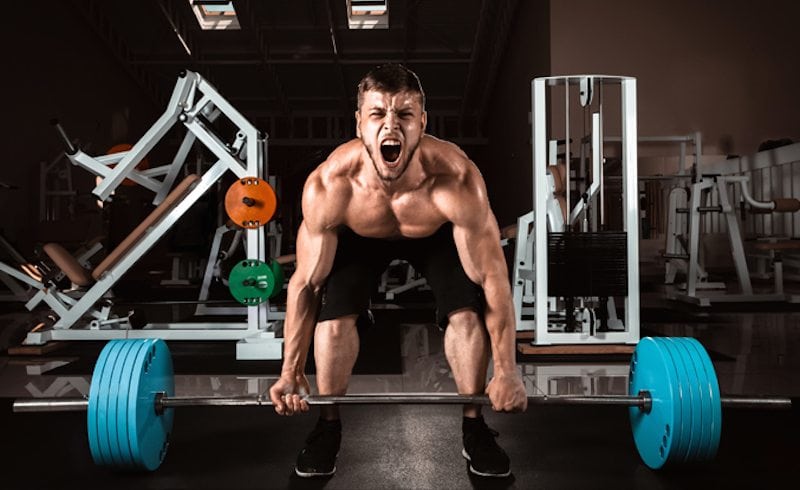No products in the cart.
Do You Need a Belt to Deadlift Safely?

The deadlift is one of the most taxing exercises there is, it can also be one of the most rewarding.
Performed correctly the deadlift will work almost all the major muscle groups. It will release huge amounts of testosterone and growth hormone and will help you get stronger than any other exercise.
If performed incorrectly, the deadlift can cause a number of injuries that can ruin your chances of reaching your fitness and physique goals.
For this reason, many people wear a belt. Others avoid them as they believe belts can ruin the deadlift. But who is right?
This article will walk you through how to perform a deadlift and the positive and negatives that using a belt can bring.
How to Perform A Deadlift Properly
First, you should grab a bar and place it on a flat surface. Place your feet under the bar so that the part of the shoe where the laces are tied is directly under it (this is the middle of your foot). Turn your toes out very slightly and then bend your knees until your shins hit the bar. Place your hands on the bar either side of your knees and grip tightly.
At the moment your back will probably be hunched over. To correct this you want to push your chest out and your shoulders back.
Keep this position and take a deep breath in, start to lift the bar up off the ground.
When it reaches past your knees you want to start pushing your hips forward to meet it. Breathe out slowly whilst doing so.
Once you’ve reached the top of the movement you should be fully upright with your chest pushed out and your hips pushing into the bar.
Slowly lower the bar by pushing your hips backwards and then when the bar goes past your knees you can begin to sit down again.
Once the plates touch the floor you have completed your first rep.
Why Would You Want A Belt?
The main reason most people use belts when deadlifting is to prevent injury. Many people also claim that the belt can help them lift more. This is possibly due to the psychological benefits of feeling more secure.
But it is also because the belt allows your abs to contract against it. This creates extra stability which allows you to lift heavier weights.
There have been studies that show that wearing a tight belt and taking a deep breath (before lifting) can help increase intra-abdominal pressure. This, in turn, increases the amount of weight that can be lifted [1].
So far we’ve got belts helping prevent injury and helping you lift heavier weights, which is pretty much all you want from the gym, isn’t it? So why do a lot of people avoid weightlifting belts?
Why Would You Not Want A Belt?
The main reason that some people avoid belts is that they believe that you can come to depend on them too much. Meaning that your lower back muscles aren’t able to develop. In reality, this is a misguided belief.
While you might want to avoid overusing the belt, by not using it for warm-up sets there is no benefit to ignoring a belt in heavier lifts.
Wearing a belt will allow you to lift heavier weights, meaning you will burn more calories, and build more muscle.
Conclusion
On 9th July 2016 Eddie Hall deadlifted a weight of 500kg, he was wearing a belt. 500kg is the heaviest weight that has ever been deadlifted.
So the idea that wearing a belt will prevent you from properly strengthening your lower back is ridiculous.
When it comes to debates like this, it is usually useful to see what professional athletes do.
Eddie was wearing a lifting suit and had a belt placed on top. This doesn’t mean that if you put a belt on you’ll automatically start lifting insane weights, but it does prove that there are clear benefits to wearing a belt when deadlifting.
The belt you should be wearing are the thick ones that are around 3 inches wide, which is quite narrow. These suit deadlifting while wider belts suit squats.
You could get one for each, but if you’re trying to save money then buy a squat belt. Just wear it slightly higher when deadlifting than you do when squatting.
Remember that if you don’t have a belt you can still deadlift, it doesn’t mean that a non-belted deadlift will lead to injury. All it means is that you might not be able to lift as much weight and that if you use bad form you are more likely to injure yourself.
The solution, in that case, is DON’T use bad form. Nice and simple!
Save
Save
Save
